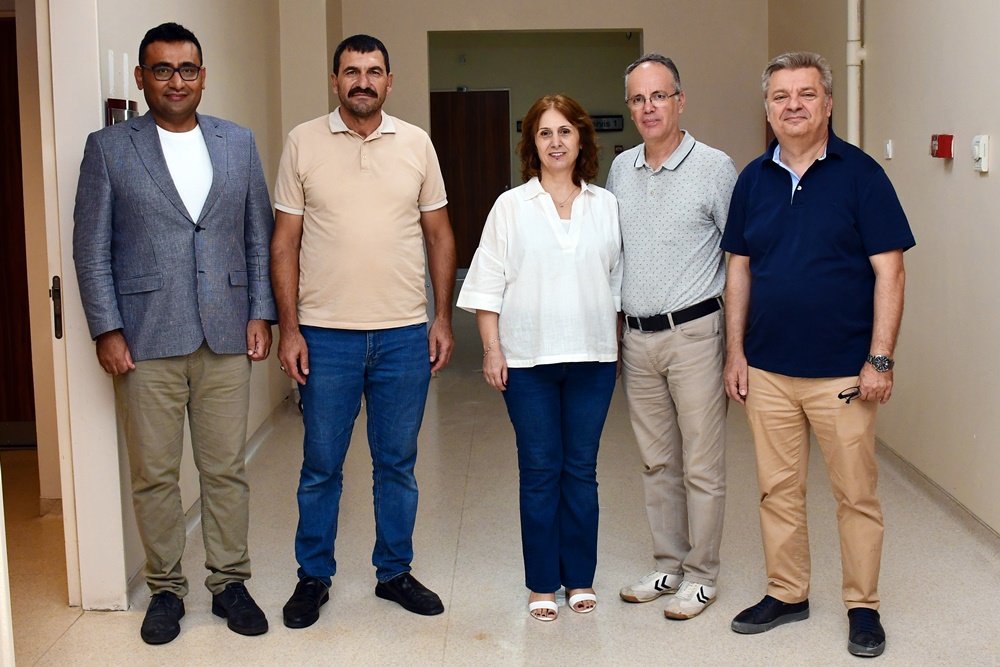MCBÜ Hafsa Sultan Hospital has started using a cryoablation (freezing) system with expandable balloons for the first time in the Aegean Region
Manisa Celal Bayar University Hafsa Sultan Hospital Pioneers in the Aegean Region with Expandable Balloon Cryoablation System for Atrial Fibrillation
Manisa Celal Bayar University Hafsa Sultan Hospital has made a groundbreaking advancement in the Aegean Region by utilizing a cryoablation (freezing) system with an expandable balloon for the treatment of atrial fibrillation. With this innovation, the hospital has become one of the first five hospitals in Turkey to offer cryoablation with an expandable balloon system for atrial fibrillation treatment.
Under the leadership of Associate Professor Dr. Bekir Serhat Yıldız from the Department of Cardiology, three patients with atrial fibrillation were successfully treated using this advanced cryoablation system. The goal of the cryoablation system is to eliminate the areas of the heart that produce abnormal electrical signals by freezing them, thereby removing the sources of arrhythmia.
Associate Professor Dr. Bekir Serhat Yıldız made the following statement regarding the new system:
"Atrial fibrillation is a common heart disease that causes irregular heart rhythms. This condition can lead to symptoms such as palpitations, shortness of breath, dizziness, fainting, fatigue, and weakness. Cryoablation is a highly effective treatment method used to resolve rhythm problems and reduce the risk of heart failure. Atrial fibrillation ablation using cryoablation is already being performed in our clinic. When this new system is used in patients with enlarged pulmonary veins, the success rate of converting atrial fibrillation to normal sinus rhythm improves due to better isolation. The risk of atrial fibrillation recurrence is reduced. We believe that applying this new method for the first time in the Aegean Region at Hafsa Sultan Hospital represents a great opportunity for the treatment of patients in the region.
We are grateful for the opportunity to apply this system at our university and to benefit our patients. I would like to thank everyone involved, starting with our Chief Physician Prof. Dr. İsmet Topçu, and extending to our management team and staff."
What is Cryoablation?
Cryoablation, commonly referred to as "cold ablation," involves destroying tissue by freezing it. The cryoablation process targets areas that cause arrhythmias by cooling them to temperatures between -40 to -60 degrees Celsius, thereby destroying them. The frozen areas are separated from healthy tissue, preventing them from causing rhythm disturbances.
Who is it Applied To?
Cryoablation is increasingly preferred for treating atrial fibrillation. Atrial fibrillation is the most common arrhythmia encountered in clinical practice and is a major cause of stroke. It also contributes to heart failure, increases the risk of disability and death, and requires anticoagulant medication. However, these medications can lead to bleeding over the long term, and patients may still experience strokes even while on medication. Cryoablation reduces the recurrence of atrial fibrillation, thereby lowering the risk of heart failure and stroke, and also shortens the duration of anticoagulant use. Cryoablation is widely used globally and is particularly effective for young patients when the arrhythmia originates close to the heart’s main conduction system.
How is it Performed?
Cryoablation treatment is performed using local anesthesia and conscious sedation through a catheter inserted via the groin vein. A special needle is used to pass from the right atrium to the left atrium, where a balloon is deployed via a delivery system. The balloon is inflated at the openings of the four pulmonary veins in the left atrium and is cooled down to -60 degrees Celsius. This procedure isolates the connections between the veins and the left atrium. The balloons used previously could only be inflated to certain diameters, but the new system allows for the balloon’s diameter to be increased during the procedure, providing better isolation in patients with larger veins and reducing the risk of atrial fibrillation recurrence.
How Long Does the Procedure Take?
Cryoablation procedures generally take 1-2 hours but can vary depending on the patient’s clinical characteristics.
Cryoablation is a complex procedure that requires experienced operators. Complications occur in about 10% of patients, but life-threatening complications are rare. Pre- and post-procedure precautions help prevent bleeding and clot formation, while procedural techniques and maneuvers minimize damage to neighboring nerves and tissues. New-generation cryoablation systems have reduced fluoroscopy time, procedure duration, and complications compared to older systems. Potential complications associated with cryoablation are usually resolved with effective intervention without causing permanent damage.
